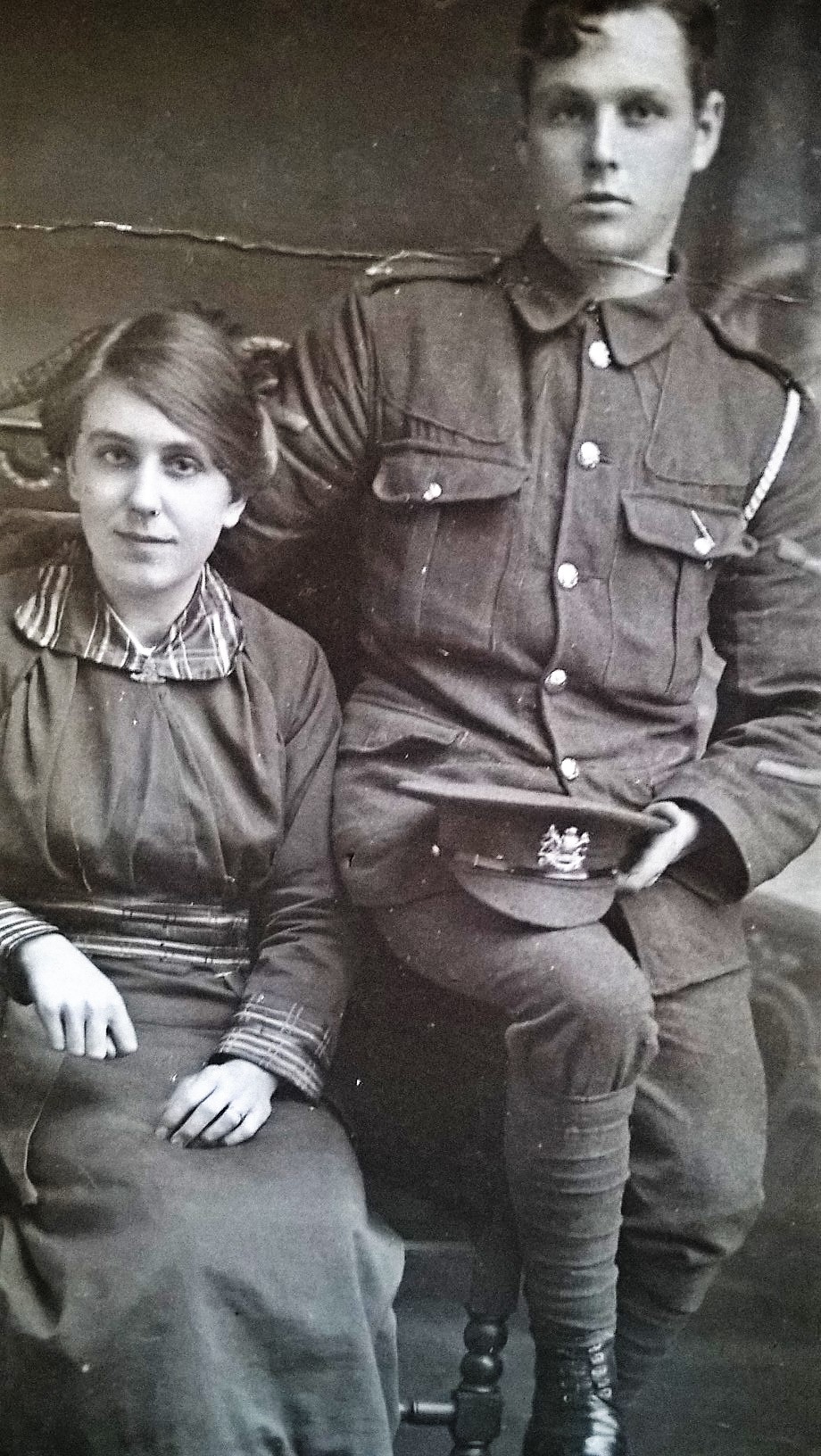Sjt
Thomas Bennett
Informationen zu Geburt
|
Geburtsdatum: 28/11/1892 |
|
Geburtsort: Liverpool, Lancashire, England, Vereinigtes Königreich |
Allgemeine Informationen
|
Beruf: Berufssoldat |
Informationen zum Armeedienst
|
Land: England, Vereinigtes Königreich |
|
Truppe: British Expeditionary Force |
|
Rang: Serjeant |
|
Dienstnummer: 2394 |
|
Einberufung ort: Ashton-under-Lyne, Lancashire, England, Vereinigtes Königreich |
|
Einheiten: — Manchester Regiment, 11th Bn. (Letzte bekannte Einheit) |
Informationen zu Tod
|
Sterbedatum: 17/08/1917 |
|
Sterbeort: The Cockroft Cemetery, Belgien |
|
Todesursache: Im Kampf gefallen |
|
Alter: 24 |
Gedenkstätte
|
Tyne Cot Memorial Tafel: 120A |
Auszeichnungen und Orden 3
|
1914 Star Medaille — 04/06/1918 |
|
British War Medal Medaille — 10/09/1920 |
|
Victory Medal Medaille — 10/09/1920 |
Punkte von Interesse 2
| #1 | Geburtsort | ||
| #2 | Einberufung ort |
Meine Geschichte
Thomas Bennett was born in 1892. He was the eldest son of Thomas and Eliza Bennett, of Liverpool Lancashire. Thomas was a career soldier before the outbreak of the war. In August 1914 he was sent to the France from India, where he was serving with the 1st Battalion Manchester Regiment. By August 1917 Thomas was serving as a serjeant with the 11th Battalion Manchester Regiment, part of the 34th Brigade of the 11th (Northern) Division.
On 16 August 1917 the 11th Division participated in the Battle of Langemark, a stage of the Battle of Passchendaele. It attacked to the south of Langemark with the 34th Brigade. The 8th Northumberland Fusiliers and the 5th Dorset Regiment were the first to attack. Once they had taken their objective the attack was to be taken over by the 11th Manchesters and the 9th Lancashire Fusiliers.
At zero hour the men left their positions. When the 11th Manchesters were crossing the Steenbeek stream they were caught by a German artillery barrage, which wounded or killed half of the Battalion’s officers. Notwithstanding the heavy casualties the Battalion took up positions near Maison Bulgare, where they awaited the moment of attack. At 6.40 a.m. the 11th Manchesters pushed forward. While trying to advance to the Cockroft Farm, Thomas’ Battalion came under machine-gun fire from Maison du Hibou and Triangle Farm, which made any further advance impossible. With their right flank up in the air the Battalion was forced to retreat, forming a defensive flank near the Cemetery.
Although the ruins of Langemark had been captured and while the 11th Northern Division had made some headway on its left flank, the attack had come at a great cost. The 11th Manchesters suffered a total of 251 casualties. Fifty-one men were killed in action, 174 men were wounded and twenty-one men were missing. Almost half of the Battalion had been incapacitated during the attack.
Serjeant Thomas Bennett was killed in action on the following day. He possibly fell while improving the Battalion’s positions at the Cemetery, as the 11th Manchesters’ were frequently shelled on 17 October 1917. The 24-year old has no known grave and is remembered on panel 120A of the Tyne Cot Memorial. Thomas left behind his pregnant wife, Mildred, and would never see his daughter, Mary Pauline.
On 16 August 1917 the 11th Division participated in the Battle of Langemark, a stage of the Battle of Passchendaele. It attacked to the south of Langemark with the 34th Brigade. The 8th Northumberland Fusiliers and the 5th Dorset Regiment were the first to attack. Once they had taken their objective the attack was to be taken over by the 11th Manchesters and the 9th Lancashire Fusiliers.
At zero hour the men left their positions. When the 11th Manchesters were crossing the Steenbeek stream they were caught by a German artillery barrage, which wounded or killed half of the Battalion’s officers. Notwithstanding the heavy casualties the Battalion took up positions near Maison Bulgare, where they awaited the moment of attack. At 6.40 a.m. the 11th Manchesters pushed forward. While trying to advance to the Cockroft Farm, Thomas’ Battalion came under machine-gun fire from Maison du Hibou and Triangle Farm, which made any further advance impossible. With their right flank up in the air the Battalion was forced to retreat, forming a defensive flank near the Cemetery.
Although the ruins of Langemark had been captured and while the 11th Northern Division had made some headway on its left flank, the attack had come at a great cost. The 11th Manchesters suffered a total of 251 casualties. Fifty-one men were killed in action, 174 men were wounded and twenty-one men were missing. Almost half of the Battalion had been incapacitated during the attack.
Serjeant Thomas Bennett was killed in action on the following day. He possibly fell while improving the Battalion’s positions at the Cemetery, as the 11th Manchesters’ were frequently shelled on 17 October 1917. The 24-year old has no known grave and is remembered on panel 120A of the Tyne Cot Memorial. Thomas left behind his pregnant wife, Mildred, and would never see his daughter, Mary Pauline.
Quellen 2
|
11 Battalion Manchester Regiment. (The National Archives, KEW (TNA), WO 95/1821/1). https://discovery.nationalarchives.gov.uk/details/r/C14303 Weitere Quellen |
|
McCarthy C., Passchendaele. The Day-by-Day Account, (London, Uniform, 2018), pg. 54-57. Verwendete Quellen |
Weitere Informationen 3
|
Commonwealth War Graves Commission Database https://www.cwgc.org/find-records/find-war-dead/casualty-details/844751 |
|
Namenlijst (In Flanders Fields Museum) https://namenlijst.org/publicsearch/#/person/_id=f9c1181f-5fd3-4010-9cbc-90da45c10b84 |
|
Lives of the First World War (Imperial War Museum) https://livesofthefirstworldwar.iwm.org.uk/lifestory/305391 |
